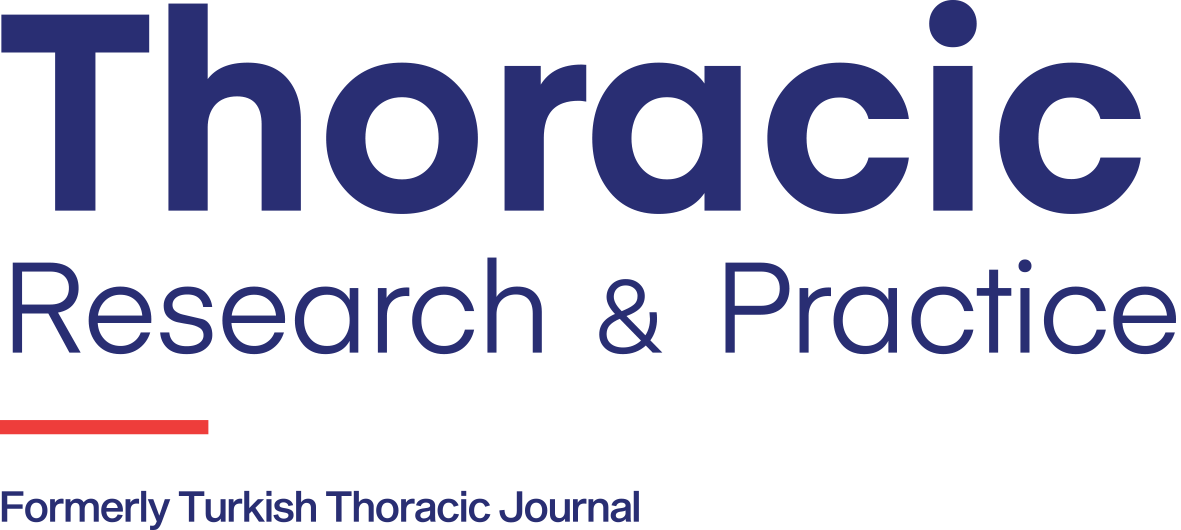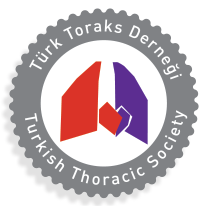INTRODUCTION
Rare diseases, also known as orphan diseases, are characterized by their low prevalence, affecting fewer than one person in 2000. Both diagnosis and treatment of rare diseases, even among individuals with the same condition, can be challenging due to their rarity. These conditions are often neglected due to their small patient populations. Medical expertise is scarce, knowledge and research are limited, and care services are inadequate.1 In a survey conducted by Powell et al.,2 the majority of healthcare professionals expressed the need for education on rare lung diseases. They recommended that educational resources be developed in collaboration with organizations such as the European Respiratory Society and integrated into meetings and events organized by these organizations. Additionally, 95% of patients believe that they should play a role in clinician education. However, barriers such as language, travel costs, and poor health conditions hinder patients’ access to educational activities.2
Patient-centered medicine aims to improve health outcomes by considering patients’ goals, preferences, and values, and determining the best intervention for each patient, while placing greater value on heterogeneity, observations, and exceptions.3 The development of patient-centered medicine can be achieved by increasing patient-focused research.
An innovative idea emerged among the team members, who discussed the possibilities of extending the advantages of telemedicine through shared experiences. A panel presentation was proposed to the Turkish Thoracic Society Congress. Recordings of video consultations (VCs) between healthcare providers and patients with rare interstitial lung diseases (ILDs), with informed consents from the patients, were shared with the congress attendees, primarily to discuss the patient perspective through patients’ own narratives shared in pre-recorded VCs of four rare ILD patients [lymphangioleiomyomatosis, Birt-Hogg-Dubé syndrome, pulmonary alveolar microlithiasis (PAM), pulmonary alveolar proteinosis], with informed consents from the patients.
A survey questionnaire was administered to evaluate the audience’s perspectives on the case presentations. The questionnaire primarily consisted of multiple-choice questions with predetermined answers on the following topics: specialty, work title, duration of work since graduation from medical school, opinion on considering patients’ perspectives in scientific meetings, and if affirmative, opinion on discussing patients’ perspectives using the method based on pre-recorded VC compared with the patient’s in-person presence in. Additionally, it covered the effects of the meeting on the participants’ own medical practice. This article aimed to evaluate the impacts of this novel method on clinicians in the context of a holistic approach to rare ILDs (Ethics Committee of Pamukkale University Faculty of Medicine; approval number: 15, date: 19.09.2023).
All 14 participants agreed on the benefit of considering patients’ perspective through the representations of patients. Half of the applicants declared that the effect of using VC recordings is similar to in-person presentation of the patient, while the other half favored pre-recorded VCs over in-person presence of the patient. Watching VCs has been reported by all participants as having a positive effect on their medical practice. The participants’ views on the session, in the context of the impact on medical practice, approach to telemedicine, and the use of VC recordings in medical/specialty education, are summarized in Table 1. The applicants mentioned observing the effect of telemedicine in giving each patient as much time as needed and a chance to communicate effectively, even through an interface. The answers were all supportive of the potential of telemedicine in providing healthcare service, as they presented an alternative to presupposition while observing the technique for the first time. The use of pre-recorded VCs for both undergraduate and postgraduate medical education was found inspiring and affirming by all the participants.
This study describes a method that enables the integration of patient perspectives through pre-recorded interviews with patients with rare ILD, used not only in medical/specialty education but also within the scope of postgraduate education, to discuss the patient perspective at a congress with the patients’ consent. This made it possible for patients to participate in the congresses remotely and express themselves, allowing the diseases to be evaluated holistically with their biopsychosocial aspects. Evaluating the experiences of the participants in the congress session, who were at different stages of their medical careers, highlights the impressive and motivating power of watching patient interviews and hearing the process from the patients themselves.
The common problems attributed to rare diseases have been mentioned as 1) being “invisible” to the healthcare systems, 2) the paucity of experts, 3) the lack of appropriate treatments, and 4) the social exclusion faced by patients and their families.4 Rare diseases pose challenges for patients, physicians, and researchers.5 General physicians and clinicians in community hospitals may have less experience with rare diseases, which can lead to delays in diagnosis and referral to expert centers. In our study, although the participating physicians had extensive professional experience, a significant portion had not previously managed patients with rare ILDs. The educational needs of both patients and physicians need to be identified and addressed, as discussed in a comprehensive review.6 The patient perspective is crucial in the education of physicians and researchers; however, this topic is primarily discussed through presentations by medical professionals on most occasions. One of the noteworthy comments from the participating physicians was that, in future national and international congresses, symposiums, and similar events, it should be possible and necessary to hear the patient’s perspective directly using this method.
As highlighted in a review article, one of the main challenges for the future is to shorten the diagnostic delay through increasing physician awareness for rare lung diseases, and educating them on how to get help and access expertise for difficult cases.6 For the PAM patient presented at a recent panel discussion, who had already reached the physician in her country through telemedicine from hundreds of kilometers away, this process offered the opportunity to receive a third opinion from an international expert thousands of kilometers away. During the latest consultation, provided through the pre-recorded VC, the health status of the patient could be observed, and radiological images could be evaluated even though it was not in real-time (Figure 1).
CONCLUSION
In conclusion, patients with rare diseases not only face clinical problems related to the disease but also bear psychosocial burdens. The impact of meetings where patients are central participants is significant for providing a holistic approach to diseases and increasing awareness and educational level of physicians on this matter. The educational method based on telemedicine through VCs and the recordings with the patient’s consent is a novel method that can amplify patients’ voices on scientific platforms in different cities or even different countries.



